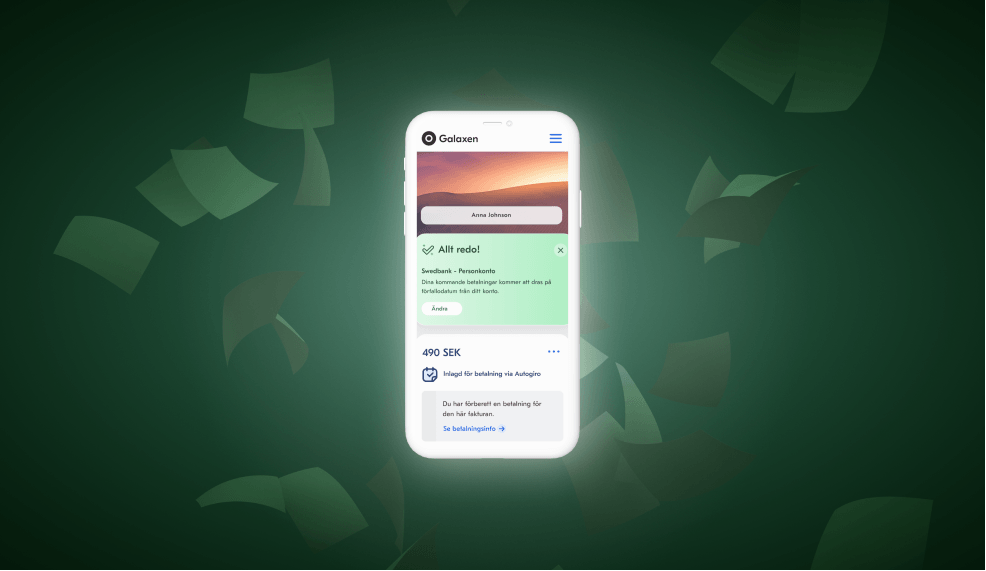Billogram’s CEO on invoicing and payment trends
Invoices have been around in one form or another for around 5,000 years. But changes to the invoice have been slow, and not always been in the right direction. Historically, invoices have often been a source of friction and misunderstanding between sellers and buyers. And if you compare an invoice from a hundred years ago with one from today, you won’t see much of a difference. But now, things are finally starting to change. We interviewed Billogram’s CEO and asked him to talk about some of the biggest trends and changes we can expect to see over the next few years.
Customer expectations are rooted in new purchasing behaviors
Even though invoices haven’t evolved much over time, the buy-now-pay-later trend of recent years is starting to alter the playing field. That, together with the rising popularity of e-commerce is where we should look to find answers about customer expectations and why they now demand a seamless, simple payment experience.
Jonas Suijkerbuijk, CEO of Billogram, explains how essential this is, for every industry. End customers across nearly every sector demand it. So, regardless of whether it’s an e-commerce purchase or the invoice they get from their electricity supplier, customers expect and demand an optimal experience. This is particularly important with younger consumers, who are constantly raising their expectations when it comes to simplicity and user-friendliness.
“Young people these days are accustomed to managing large chunks of their daily life digitally, and largely using their mobile phones. They’re not used to getting letters via ordinary mail and have probably never done their banking by logging in from their computer. A traditional invoice flow, involving a paper invoice and internet banking to make the payment, would fall far, far short of their expectations. They demand a lot more. So, the challenge lies in finding ways to offer a seamless, easy format for invoicing and payments that feels natural for the customer."

EU directive creates new possibilities for technological advancement
The EU Directive on payment services (PSD2) has opened up entirely new possibilities for developing the market for electronic payments. It puts prerequisites in place for technological advancement that had previously been far too complicated to pursue. Today in the EU, there are many other initiatives focused on digital invoicing and payment as well, involving shared standards and simplified ways of transferring information between business systems and internet banks.
All of this is helping to open up new markets for digital payment services, where new players can enter the playing field and quickly start competing with the more established companies by building their businesses around more technically complex solutions. This new playing field and competitive situation is what is driving the pace of innovation and giving rise to new solutions that improve and simplify payments for the end consumer in various ways.
Jonas Suijkerbuijk is excited about it all:
“For us, the pace of development is a good thing. Rather than needing to design everything from scratch ourselves, we can just pick and choose the components we need and then refine them. As long as we are investing in innovation, we can transform the various parts of the value chain for invoicing and payment. If we weren’t doing that however, all of this change would be a threat. But we’re more motivated and excited than ever to work with innovation and constantly improve,” he says.

“The winners will be the ones offering added-value”
As for what’s on the horizon with invoicing and payments, Jonas Suijkerbuijk says that we should expect some short-term trends that will be rooted in the pending recession.
“Those who haven’t yet started investing in customer loyalty are going to really need to hurry to catch up, if it's not already be too late. Making mistakes that disappoint customers is going to come at a much higher price and top-notch customer management practices are going to play an even more crucial role in the future. It’s going to become even more important for companies to offer flexibility and simplicity in all areas of the customer experience, not least invoicing and payments. This is particularly relevant for those offering silent, low-interest products where the primary, or perhaps only interface between them and their customer is at the time of payment,” he says.
More long term, Suijkerbuijk expects to see traditional invoices phased out and replaced by simpler, more customer-oriented alternatives. He concludes:
“Back when we started up Billogram, we anticipated that just five years down the road, paper invoices would no longer exist. But here we are, ten years later and there are still a lot of paper invoices floating around. Still, I think it’s reasonable to assume that paper invoices will become more and more obsolete in the years ahead. The content of today’s paper or PDF invoices is going to become increasingly abstract, with certain functions, like the payment itself, being performed in more interactive interfaces. The channels that will be used for reaching end customers will likely also radically change. All of it will be aimed at making things easier for the end customer. Companies that see the opportunities and are able to offer added value in all parts of the customer experience will emerge as the winners,” he says.
Since its inception in 2011, Billogram has transformed an outdated billing process by offering an intelligent digital billing platform. Through interactivity and automation, we streamline customer management for companies with recurring payments and improve the customer experience for their customers. The result is a payment that benefits everyone. Want to know more? Read one of our guides or contact us!